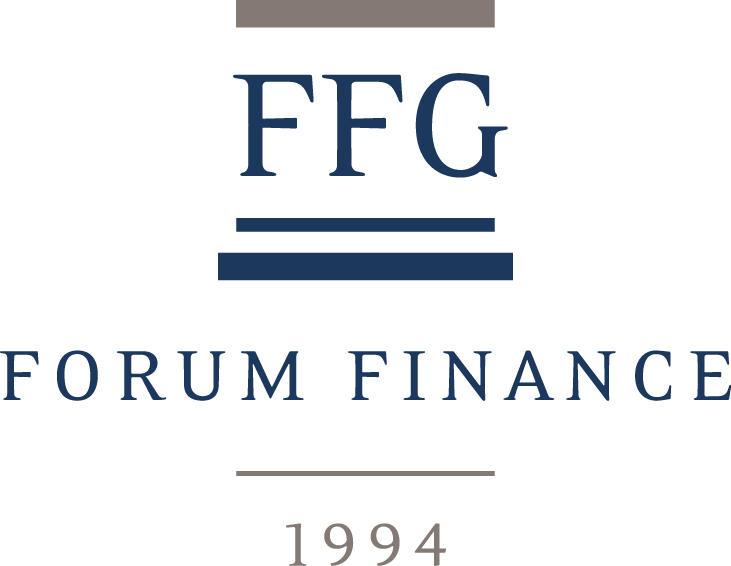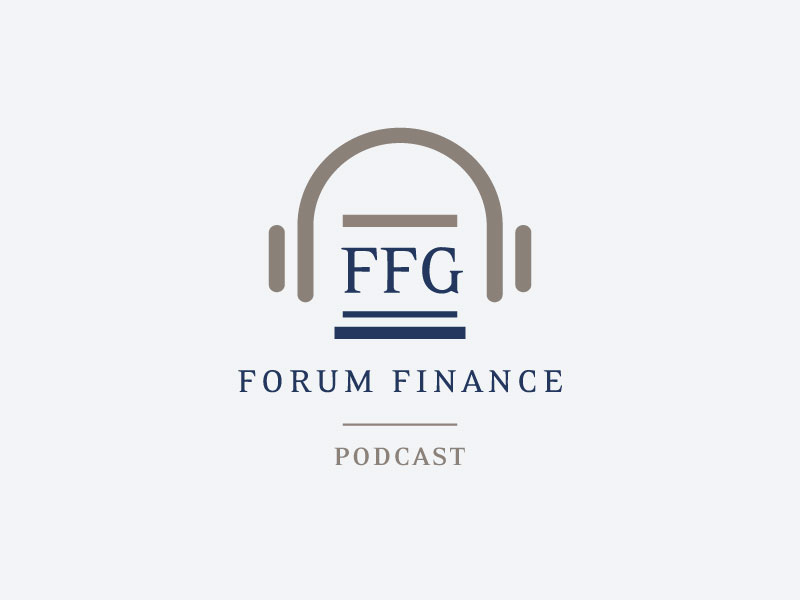Newsletter | October 2023
6 octubre 2023Noticias financieras,Newsletter
U.S. 10-year yields hit 16-year peak as Fed seen higher for longer
- 7.29% THE PERFORMANCE OF US LONG TREASURY INDEX
Investment perspective
As widely anticipated, the US Federal Reserve decided to hold its target rate range steady at 5.25-5.50%, the highest level in 22 years. In their newly released “dot plot”, at least one more hike is in the card this year and that cuts would begin later than previously signaled. The ECB raised rates 25bps to 4% and signaled that it was likely be the last increase. The BoE and SNB surprised investors with their decision to take a break from their rate hiking cycle. As Investors are internalizing the likelihood that rates will stay higher for longer, U.S. treasuries were notably weaker with the curve bear steepening. The U.S. 10-year yield rose nearly 90bps, touching its highest level since 2007. The 2-year/10-year spread, inverted by more than 100 basis points on June 30, before narrowing to 50 basis points by the end of September. In that context, bond markets posted a second consecutive month of declines across all sectors. The Global Aggregate hedged in U.S. Dollar was down 1.7%, the Global Aggregate Corporate -1.9% and the Global High Yield -1.1% while EM USD Aggregate was down 2.3% The worst performer was the US Long Treasury segment with -7.3%. Global equities continued their downward trend, with the All Country World index recording a decline of 4.1% in U.S. Dollar. Contrary to August, developed markets suffered more than emerging markets, with a decline of 4.3% and 2.6% respectively. Major US equity indices were down in September, a month that lived up to its reputation as the worst month of the year in terms of returns. The U.S. large cap declined by 4.8% while the heavy information technology index was down 5.8%. European equities held up better, with a decline of 1.6%, as did Japanese equities, up 0.3% in local currency. Chinese equities were down 2.6% in U.S. dollar while Indian equities were up 1.7% expressed in U.S. dollar. With oil prices recently reaching record highs for the year in 2023, energy prices continue to pose a significant risk to the disinflation narrative. The U.S. Dollar index was up 2.5% while gold was down 4.7%, logging a decline for the second straight quarter.
Investment strategy
Several equity indices hit their highs during the third quarter, before declining significantly, reducing year-to-date returns. The road to a soft-landing may be winding and full of diverging signals but hopes for such a scenario remain intact despite a very aggressive monetary policy. Several Western central banks have not raised interest rates further in September even if inflation remains above the 2% target. These announcements would seem to signal the end of the monetary tightening cycle and the opening of a stabilization phase for short-term interest rates. This phase of rates plateauing around current levels is likely to last several quarters before possible rate cuts in the second half of 2024. The main risks of the current soft-landing scenario are either a more severe slowdown in economic activity or continued strong growth leading to a resurgence in inflation. Even if inflation will only fall gradually, we passed the peak a few months ago, and the theme of disinflation is still relevant. Against this backdrop of moderate growth and disinflation, we find corporate bonds attractive, even in the event of rising defaults, as they offer carry with limited interest-rate risk. Like economies, markets are at a crossroads following recent price action that pushed them close to critical technical levels and into an oversold situation that are generally rare opportunities to increase market exposures.
U.S. SMALL CAP INDEX NOW IN NEGATIVE TERRITORY YEAR-TO-DATE
Portfolio Activity/ News
Considering that we had reached terminal rates, we tactically increased our equity weighting in September and are maintaining this position.
Our rather cautious stance on long-dates bonds has proved judicious, and we are maintaining this positioning, while recognizing that we could selectively take advantage of any price exaggeration. We remain confident about our short-dated corporate bonds exposure. However, we recognize that even a moderate deterioration in economic conditions because of tighter financial conditions will create some challenges for highly indebted companies, causing default rates to rise. After a phenomenal rally in the first part of 2023, technology companies and, more generally, so-called growth stocks fell sharply in August and September due to an increase in the likelihood of interest rates remaining higher for longer. We took advantage of this selloff to initiate a position in a strategy focused on investing in exceptional growth companies. As a provider of diversification and return in adverse markets, it is interesting to note the very good performance of our alternative strategy bucket. Indeed, our trend-following exposure recorded a positive return of more than 5% in a complicated market for both bonds and equities.
Download the Newsletter
Newsletter | September 2023
13 septiembre 2023Noticias financieras,Newsletter
U.S. 10-year yield jumped to 4.34% on growing concerns of supply
- 12.7% THE PERFORMANCE OF WHEAT INDEX IN AUGUST
Investment perspective
The resilience of the U.S. economy and falling inflation led to a wider adoption of the soft landing scenario. However, the release of stronger-than-expected figures and a hawkish Fed put pressure on U.S. long rates leading to a number of setbacks in terms of return for risk assets after several favorable months. The U.S. treasuries were mostly weaker with the curve bear steepening, though yields finished the month well off their highs. In that context, bond markets delivered negative returns with the Global Aggregate hedged in U.S. dollar down 0.13% and the Global Aggregate Corporate down 0.4%. The most affected segment was the EMD complex with -1.4% for the hard currency sovereign index and -2.0% for the local currency index. One of the most prominent headwinds facing equities was the backup in interest rates. Global equities sold off 2.8% in U.S. Dollar terms. Developed markets outperformed emerging markets, with a loss of 2.3% versus 6.2%. The U.S. large cap index was down 1.6% while the equal-weight index was down 3.2%, posting their first monthly decline since February. As is often the case, last month’s risk-off environment was felt more keenly by European and emerging market equities, with declines of 2.5% and 6.2% respectively. Among emerging markets, Chinese equities were down almost 9% in U.S. Dollar. The Dollar index gained 1.7%, reversing most of prior two months’ losses. Gold fell more than 2% while oil prices continued their upward trend (WTI up 2.2%). In Europe, the gas prices jumped by 23% due to fear of LNG supply disruptions at plants in Australia. Other commodities posted negative returns. The equity volatility was unchanged at 13.6% while the interest rate volatility (MOVE index) came down sharply and is likely to get a reprieve as we approach the end of the rate hike cycle. According to the State Street Risk Appetite Index, investors’ cash allocation showed the biggest jump over a year mostly at the expense of investors’ allocation to equities.
Investment strategy
The U.S. economy proved resilient despite tighting financial conditions. Helped by encouraging signs of easing in the job market, the risk of additional Fed tightening is limited and current yield should be close to terminal rate. U.S. real yield are approaching 2%, the highest since 2009, suggesting that financing conditions are indeed more restrictive and should cool down the US economy. Credit spreads are well behaved and sit at their long-term averages. They could potentially widen if economic slowdown is more pronouned that currently anticipated. However, we do not expect them to widen massively, and even in that case falling sovereign yields would partially compensate for the negative impact of spread widening. Having more S&P 500 equal-weight exposure has been painful
year-to-date. However, the combination of cheaper valuations and some reversion to the mean does give us confidence. We remain positive on Japanese equities due to strong fundamentals, cheap valuations and loose monetary policy. While aware of the risks and challenges ahead, we recognize that the recent market downturn could provide us with an opportunity to temporarily increase our equity to slightly overweighted the asset class, to the detriment of gold.
U.S. 10-YEAR REAL YIELD ARE AT 1.89% - HIGHEST LEVEL SINCE 2009
Portfolio Activity/ News
Our asset allocation and portfolio composition remained cautiously positioned during the month, which contributed positively to our relative performance. Within fixed income, we reduced our emerging market debt sovereign and hence duration exposure. We reinvested part of the proceeds in emerging market debt corporate strategy, which offered an attractive risk-reward profile. The recent sell-off in developed market bonds has given us and our managers the opportunity to gradually increase our interest rate sensitivity as measured by duration. We pared back our credit long/short exposure but remained invested in this type of strategy to reflect our cautious stance. In Europe, we initiated a position in a dedicated flexible credit opportunity strategy that provides an exposure to credit with an active duration management expertise. Our U.S. equity portfolio has remained unchanged during the period. It’s important to highlight that our exposure comprises of a significant long/short exposure particularly suitable in the current environment. We pared back our frontier markets position for our European reference currencies and reinvested the proceeds in European or Swiss equities.
Download the Newsletter
Newsletter | August 2023
14 agosto 2023Noticias financieras,Newsletter
THE US DOLLAR HAS ERASED ITS JUNE GAINS AGAINST THE EURO IN JULY
+ 10.4% THE PERFORMANCE OF COMMODITIES IN JULY
Investment perspective
In July, fixed income recorded positive returns across all sectors except for the U.S. long-dated Treasury sector (-2.2%), while global equities were up 3.7% in U.S. dollar terms. The key takeaway from July was the broadening of returns. The U.S. large cap index gained 3.1%, while the equal weighted gained 3.4%, beating the market cap weighted index for the second month in a row. The U.S. small-cap index delivered stronger gains with an increase of 6.1% for the month. Typical value sectors posted gains with energy up 7.3% and financials 4.7%, while Healthcare lagged (+0.9). Emerging market equities posted strong returns, thanks to a Chinese equities rebound of +10.8% in U.S. dollar terms. As widely expected, the Fed increased interest rates by 0.25% to 5.25% - 5.50%. In Europe, the ECB also lifted its deposit and main refinancing rates by 25 bps, to 3.75% and 4.25%, respectively, in line with market expectations. The ECB opened the door to the possibility of a pause in September. This dovish shift was probably due to falling eurozone inflation and weaker activity with manufacturing PMI at 48.9 in July. In this context, the U.S. dollar weakened against major European currencies while recording strong gains against the Japanese and Chinese currencies. Above all, the highlight of the month was the strong return recorded in the commodity complex (+10.7) – particularly in the energy sector (+16.0%). Market expectations relative to the path of the Fed’s monetary policy have shifted significantly since the beginning of the year. After its meeting last month, the Fed said that it would watch incoming data and study the impact of its rate hikes on the economy. The terminal rate market expectation currently stands at 5.4% in November and the first rate cut in 1Q-2Q 2024.
Investment strategy
Our portfolios benefited from the positive returns recorded across developed equity markets as well as emerging markets, including China. Like many investors, we have been surprised by the strength of equity markets, in the face of rising interest rates. Despite recent market upswing, we are convinced that the full effect of the central bank’s tightening cycle – which, in the U.S. tends to lag economic activity by 18 to 24 months – has yet to be felt across the economy. In addition, the yield curve has in-verted further, which is historically inconsistent with an economic recovery. A key takeaway from July was the broadening of returns and market rotation, marking the second month in a row where the U.S. large cap equal weighted index outperformed the tra-ditional U.S. large cap market weighted index. As the equity rally broadened beyond mega cap technology stocks, the volatility index fell to single digits, which was the lowest monthly reading since December 2019. We reiterate our defensive stance as we see risks building on the horizon that are not fully priced in by the market. In this context, we maintain our underweight exposure in equities with a preference for defensive strategies.
TREASURY YIELD-CURVE INVERSION NEARS MOST EXTREME SINCE 1980s
Portfolio Activity/ News
We have kept our asset allocation broadly unchanged in July, but we have done extensive work within each asset class to reflect the market dynamics and rotation. In equities, we took advantage of the recent market strength to reduce our exposure to technology as well as certain others thematics, including U.S. Small Cap Growth, and reallocated the proceeds into the S&P 500 Equal Weight and respective domestic markets across reference currencies. We reduced our positions in multi-strategy hedge funds and reinvested the proceeds into global macro and trend following strategies. Our hedge fund exposure temporarily decreased after the reduction of our event-driven bucket. The proceeds have been kept in cash pending the reinvestment in a risk parity strategy. We pared back our gold and convertible bond positions. Within fixed income, we have gradually increased our existing positions with a preference for flexible managers as uncertain-ties over the evolution of interest rates remain elevated.
Download the Newsletter
Perspectivas de inversión 2023 | Repaso y previsión semestral
26 julio 2023Noticias financieras,Investment perspectives
Resumen de nuestras previsiones
Los activos arriesgados prosperaron
Tras un duro 2022 para los activos tradicionales de renta fija y variable afectados por el vertiginoso ritmo y la magnitud de las subidas de los tipos de interés encabezadas por los bancos centrales de Estados Unidos (Fed) y Europa (BCE), la primera mitad de 2023 les supuso un alivio gracias a la fuerte rentabilidad de los activos financieros pese a una actividad económica poco inspiradora, especialmente en Alemania y China. Los bonos del Estado y los bonos con grado de inversión empezaron el año con resultados razonables, mientras que las materias primas sufrieron debido a las preocupaciones por el crecimiento económico. Los principales índices de renta variable en Estados Unidos, Europa y Japón arrojaron fuertes resultados, pero las diferencias en los resultados entre sectores y acciones fueron especialmente notables. La dispersión en los mercados de renta variable se acentuó durante el segundo trimestre. Después de haber presentado excelentes resultados corporativos, el derrumbo de algunos bancos en febrero y marzo puso en evidencia el daño que puede hacer una rápida sucesión de subida de tipos a los balances corporativos.
Un mercado de renta variable monopolizado por un par de acciones
Las carteras concentradas que estaban principalmente expuestas a las acciones tecnológicas se vieron recompensadas. Las ganancias de este año se deben a tan solo un puñado de acciones tecnológicas pese a los tipos más altos. Es más, las siete empresas más grandes del S&P 500, todas empresas tecnológicas, han subido una media del 86% en lo que va de año. Entretanto, las otras 493 empresas del S&P 500 apenas han variado en su conjunto. En Europa, a las grandes empresas tecnológicas ASML y SAP, se han unido LVMH y L’Oreal como mayores contribuyentes al repunte del mercado y representan más del 40% del rendimiento del índice.
Crecimiento estadounidense resistente pero Alemania en recesión
A principios de junio, el Banco Mundial revisó su previsión para el crecimiento estadounidense para 2023, del 0,5% previsto en enero al 1,1%, mientras que se espera que el crecimiento de China suba al 5,6%, en lugar del 4,3% en enero. El modesto repunte de la actividad china beneficiará principalmente a los sectores de su propio país, especialmente los de servicios, con beneficios limitados para otras economías avanzadas. Se prevé ahora un crecimiento del PIB en la zona euro del 1,1% y del 1,6% para 2023 y 2024 respectivamente. El cambio positivo clave que sustenta esta revisión es la bajada de los precios energéticos y el progresivo despeje de los atascos en las cadenas de suministro.
La Fed y el BCE siguen en modo beligerante
La persistencia de la inflación subyacente ha resultado ser un riesgo importante, dado que podría derivar en un mayor endurecimiento monetario. No obstante, la bajada de los precios energéticos ha reducido la inflación general, lo que ha beneficiado a la demanda y los mercados financieros. La Reserva Federal optó por no variar los tipos en junio, pero la mayor parte de sus miembros coincidieron en que hará falta al menos otra subida de 25 puntos básicos antes de final de año. En junio, el Banco Central Europeo (BCE) subió su tipo de facilidad de depósito 25 puntos básicos hasta el 3,5% y ha dejado claro que debemos estar preparados para más subidas en la siguiente reunión de julio, mientras que el Banco de Japón sigue mostrándose conciliador y seguirá ayudando a la frágil recuperación económica pese a una inflación más fuerte de lo previsto.
Las materias primas se vuelven a debilitar
El índice de materias primas arrojó resultados negativos en el primer y segundo trimestre, proclamándose la peor clase de activos en nuestro universo de inversión con un -4,99% y un -2,48% respectivamente. Esto se debe a que los precios energéticos cayeron debido a la desaceleración del crecimiento global y por una demanda inferior gracias a un clima más agradable. Además la rápida expansión de las capacidades de GNL mitigó las presiones sobre el mercado del gas natural. Los precios de los metales básicos cedieron ante una demanda global más débil y, en especial, un repunte de la demanda más lento de lo previsto en China. Además, el suministro de metal ha aumentado la presión sobre los precios. En cuanto a los metales preciosos, el oro aportó resultados positivos (+5,23% en la primera mitad del año).
Escasas acciones en modo risk-on
Nuestra asignación defensiva mantenida durante el primer semestre favoreció las inversiones alternativas, como los hedge funds, por su capacidad de aprovechar las oportunidades durante períodos de alta volatilidad y limitar las pérdidas, o el oro, que ofrece resultados razonables durante períodos de tensión e inflación. Mantenemos nuestra asignación relativamente defensiva con una preferencia por las inversiones alternativas en lugar de la renta variable. Nuestra asignación sigue estando bien diversificada, lo que debería beneficiarse de cierta reversión a la media inevitable o proporcionar cierta protección si los mercados empeoraran.
ÍNDICE
- RESUMEN DE NUESTRAS PREVISIONES
- MEDIO AÑO 2023 : REPASO DE NUESTROS TEMAS DE INVERSIÓN
- PRIMER SEMESTRE 2023 : ACONTECIMIENTOS ECONÓMICOS Y POLÍTICOS 4
- PRIMERA MITAD DE 2023 : LOS MERCADOS FINANCIEROS
- PREVISION PARA EL 2° SEMESTRE DE 2023 : PERSPECTIVAS ECONÓMICA
- PERSPECTIVAS DE LAS CLASES DE ACTIVOS – 2° SEMESTRE DE 2023
- 2° SEMESTRE DE 2023 : IMPLICACIONES DE INVERSIÓN – ASIGNACIÓN DE ACTIVOS EN JULIO
- TABLA DE ASIGNACIÓN DE ACTIVOS – EURO – JULIO DE 2023




